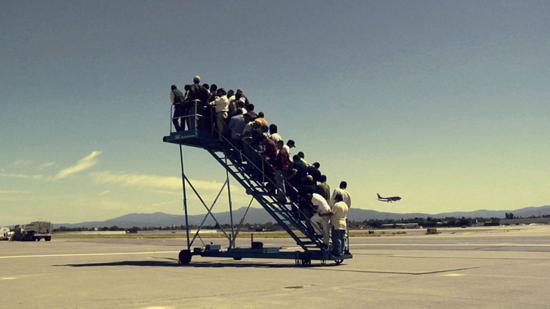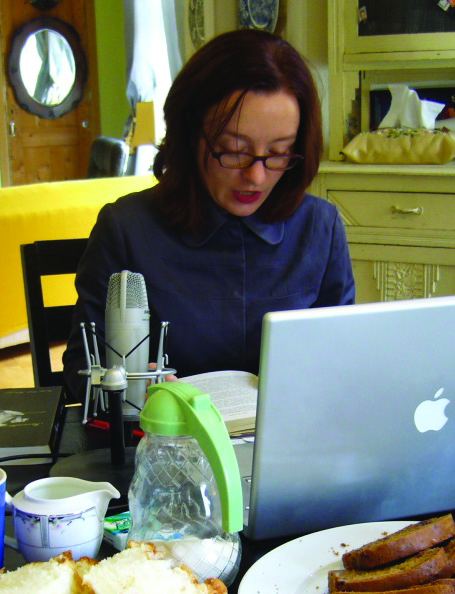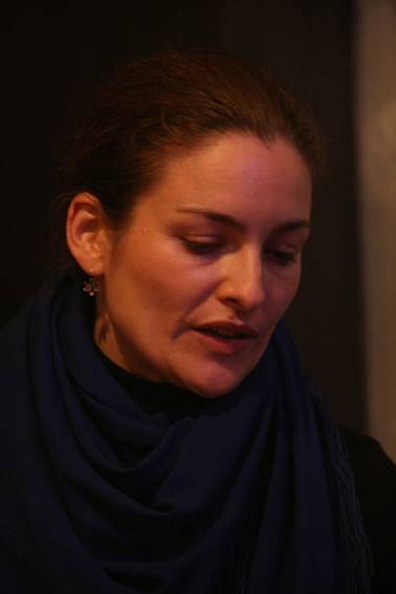 Adrian Paci, Centro di Permanenza Temporanea (2009)
Adrian Paci, Centro di Permanenza Temporanea (2009) Alternative Spatial Imaginaries
Symposium, Tropenmuseum, Amsterdam
April 12, 2013
Much of the current political debate about culture and society revolves around the question who does and who does not belong ‘here’. Underlying this debate is a logic that assumes that there is a ‘Dutch’ space characterized by ‘Dutchness’, a ‘Moroccan’ space characterized by ‘Moroccanness’, etc. The spatial image that thus emerges is that of a discontinuous, ruptured landscape, where cultures are envisioned to occupy their own separate territories. This is the legacy of a 19th century worldview that also has its echoes in the ethnographic museum and its tradition of regional displays.
Migration and mobility have challenged this geography of autonomous cultures located in distinct, often national territories. We need new spatial imaginaries to come to a better understanding of the dynamics of culture, of the multiple lifeworlds that intersect within specific places, and of the ways in which communities take shape and lay claims to space within an interconnected world. Anthropologists, cultural theorists and geographers have therefore increasingly focused on mobility. So too have artists who have developed the visual language to make these issues tangible.
This symposium is therefore as much about topical questions about place and the spatialisation of belonging, as it is about artistic imagination.
Presenters are artists Sophie Ernst, Anna Okrasko, and Maria Iorio & Raphaël Cuomo. Moderated by Anke Bangma.
What is the place of home in your world?’, is a recurrent question in the work of Sophie Ernst. She has explored this question through conversations with people who were displaced from their homes during turbulent processes of nation formation, like the Partition of South Asia into India and Pakistan. Using her installation Home as a thought-exercise, Ernst will look at the ways in which home is imagined on the level of nations, communities and individuals.
Anna Okrasko stages fictional documentaries with the actual inhabitants of real urban settings, as a means to address how people negotiate a shared space. She will discuss her film Sobota (Saturday). It presents an image of the Dutch urban landscape, seen through the experience of Polish migrant workers. By appropriating visual elements and soundtracks from 1950s films, Okrasko brings in references to visions of society that seem forgotten and out of place today.
Maria Iorio & Raphaël Cuomo will talk about a series of video works that reimagine North-South connections in the Mediterranean area. They have engaged with places like the Tunisian city M’saken, also known as ‘Little France’, and with Lampedusa, which is both a holiday island and Europe’s main frontier. Iorio & Cuomo chart parallel worlds and histories, visualizing for example how the movements of migrants and tourists intersect but are simultaneously carefully kept apart.
This symposium is held in conjunction with the exhibition Imagined Places, with work by Claudia Cristovão, Bouchra Khalili, Adrian Paci, Ho-Yeol Ryu and Zineb Sedira (on view until April 14, 2013).
Migratie /
Netwerk

Anke Bangma
Curator
